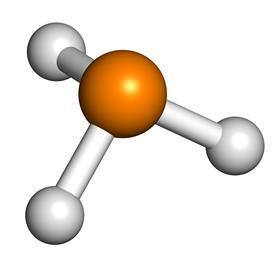| S.N | NH3 | PH3 |
| 1. | It is lighter than air. | It is heavier than air. |
| 2. | It is not poisonous. | It is highly poisonous. |
| 3. | It forms H-bonding. | It does not form H-bonding. |
| 4. | It is highly soluble in water. | It is sparingly soluble in water. |
| 5. | Its aqueous solution is alkaline. | Its aqueous solution is neutral. |
| 6. | It forms NH4OH i.e. stable | It forms PH4OH i.e. unstable. |
| 7. | It forms complexes. | It does not form complexes. |
| 8. | Its bond angle is 107º. | Its bond angle is 93º. |
| 9. | It is called ammonia (azane). | It is called phosphine (phosphane). |
| 10. | It is a compound of nitrogen. | It is a compound of phosphorous. |
| 11. | It has higher boiling point. | It has less boiling point. |
| 12. | 2Na + 2NH3 → 2NaNH2 + H2↑ | 6Na + 2PH3 → 2Na3P + 3H2 |
| 13. | It burns in excess of air or oxygen giving nitrogen and water.
4NH3 + 3O2 → 2N2 + 6H2O |
It burns in oxygen yielding phosphorous pentoxide and water.
2PH3 + 4O2 → P2O5 + 3H2O |
| 14. | It forms stable salts known as ammonium salts. | It forms unstable salts known as phosphonium salt. |
| 15. | It precipitates out metals from their aqueous salt solution as metallic hydrides.
Image source: studious |
It precipitates out metals from their salt solution as metallic phosphides.
Image source: chemistryworld |
References:
i) https://www.sciencedirect.com/science/article/abs/pii/S2210271X18305000
ii) https://byjus.com/jee-questions/why-does-ammonia-has-higher-boiling-point-than-phosphine/



